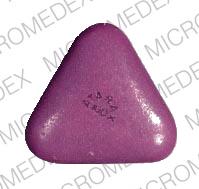Atarax Side Effects
Generic name: hydroxyzine
Medically reviewed by Drugs.com. Last updated on Mar 12, 2025.
Note: This document contains side effect information about hydroxyzine. Some dosage forms listed on this page may not apply to the brand name Atarax.
For healthcare professionals
Applies to hydroxyzine: compounding powder, intramuscular solution, oral capsule, oral suspension, oral syrup, oral tablet.
General adverse events
The most commonly reported side effects included sleepiness, headache, and tiredness.[Ref]
Nervous system
- Very common (10% or more): Sleepiness (up to 13.74%)
- Common (1% to 10%): Headache
- Rare (0.01% to 0.1%): Convulsion, tremor
- Frequency not reported: Anticholinergic activity, central nervous system (CNS) depression, drowsiness, incoordination, involuntary motor activity, psychomotor impairment, stimulation
- Postmarketing reports: Dizziness, dyskinesia, dystonia, paresthesia, sedation, seizures, syncope[Ref]
Other
- Common (1% to 10%): Tiredness
- Frequency not reported: Antimuscarinic effects, lassitude
- Postmarketing reports: Asthenia, malaise, pyrexia, sudden death[Ref]
Gastrointestinal
- Common (1% to 10%): Dry mouth
- Postmarketing reports: Constipation, diarrhea, nausea, vomiting[Ref]
Cardiovascular
- Frequency not reported: QT prolongation, Torsade de Pointes
- Postmarketing reports: Cardiac arrest, cardiac arrhythmias, edema, hypotension, ventricular arrhythmias, ventricular fibrillation, ventricular tachycardia[Ref]
Hypersensitivity
- Frequency not reported: Hypersensitivity reaction
- Postmarketing reports: Allergic reaction, anaphylactic shock, angioedema, hypersensitivity[Ref]
Respiratory
- Frequency not reported: Respiratory depression
- Postmarketing reports: Bronchospasm[Ref]
Dermatologic
- Postmarketing reports: Acute generalized exanthematous pustulosis (AGEP), bullous condition (pemphigoids, toxic epidermal necrolysis), dermatitis, erythema, erythema multiforme, fixed drug eruptions, increased sweating, maculopapular rash, pruritus, rash, Stevens-Johnson syndrome, urticaria[Ref]
Psychiatric
- Postmarketing reports: Aggression, agitation, confusion, depression, disorientation, hallucination, insomnia, tics[Ref]
Genitourinary
- Postmarketing reports: Dysuria, enuresis, urinary retention[Ref]
Ocular
- Postmarketing reports: Accommodation disorder, blurred vision, oculogyric crisis[Ref]
Hepatic
- Postmarketing reports: Hepatitis, liver function tests abnormal[Ref]
Hematologic
- Postmarketing reports: Thrombocytopenia[Ref]
Metabolic
- Postmarketing reports: Weight gain[Ref]
See also:
References
1. (2001) "Product Information. Vistaril (hydroxyzine)." Pfizer U.S. Pharmaceuticals
2. (2001) "Product Information. Atarax (hydroxyzine)." Pfizer U.S. Pharmaceuticals
3. Cerner Multum, Inc. "UK Summary of Product Characteristics."
Frequently asked questions
- Can you take hydroxyzine for anxiety and sleep?
- Why was Atarax discontinued?
- Can Hydroxyzine be Taken Long-term For Anxiety?
- Does Benadryl help with or cause anxiety?
- Can dogs take hydroxyzine?
- When Can You Safely Drink Alcohol After Stopping Hydroxyzine?
- Can you take antihistamines when pregnant?
More about Atarax (hydroxyzine)
- Check interactions
- Compare alternatives
- Reviews (146)
- Drug images
- Dosage information
- During pregnancy
- Support group
- Drug class: antihistamines
- Breastfeeding
Patient resources
Other brands
Professional resources
Other brands
Related treatment guides
Further information
Atarax side effects can vary depending on the individual. Always consult your healthcare provider to ensure the information displayed on this page applies to your personal circumstances.
Note: Medication side effects may be underreported. If you are experiencing side effects that are not listed, submit a report to the FDA by following this guide.

